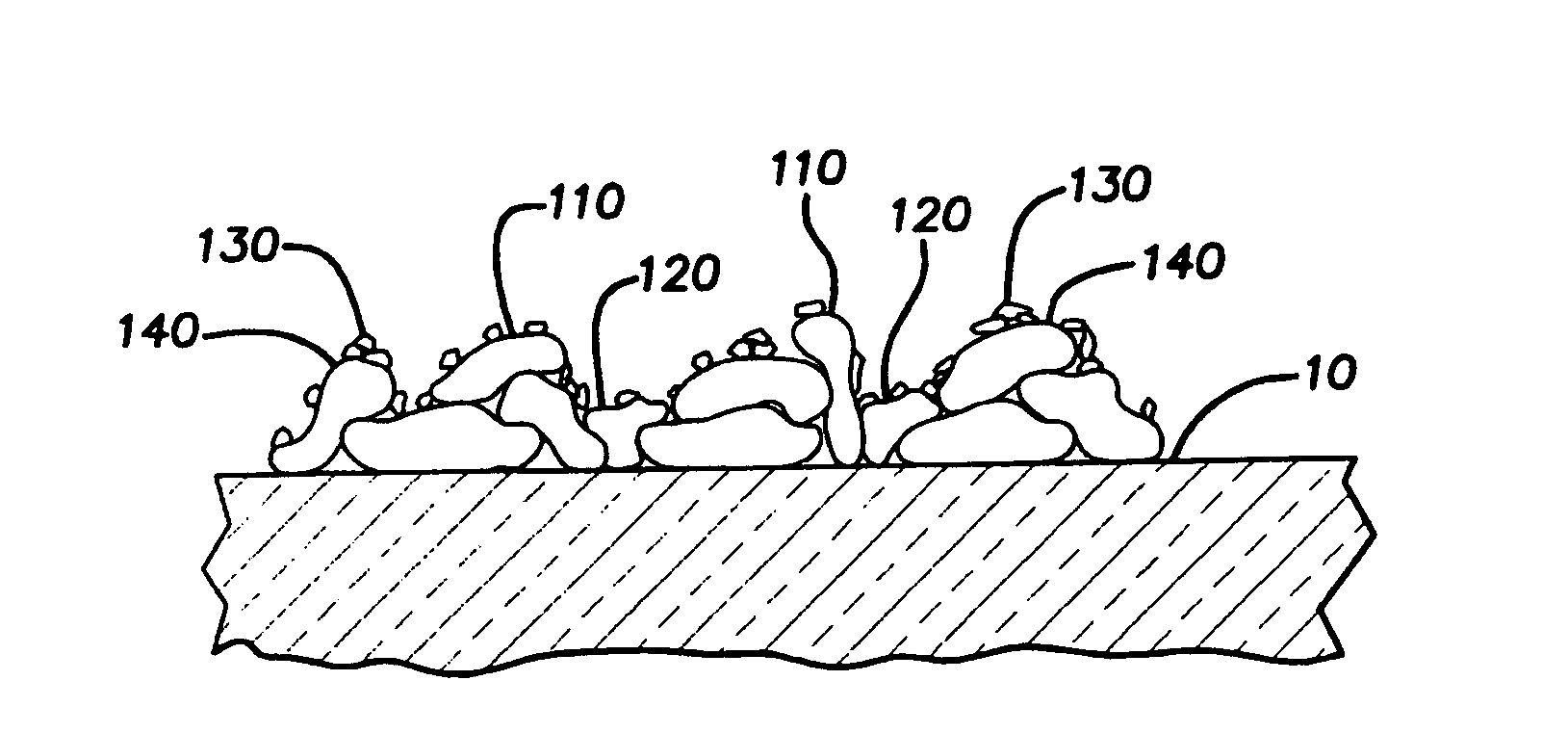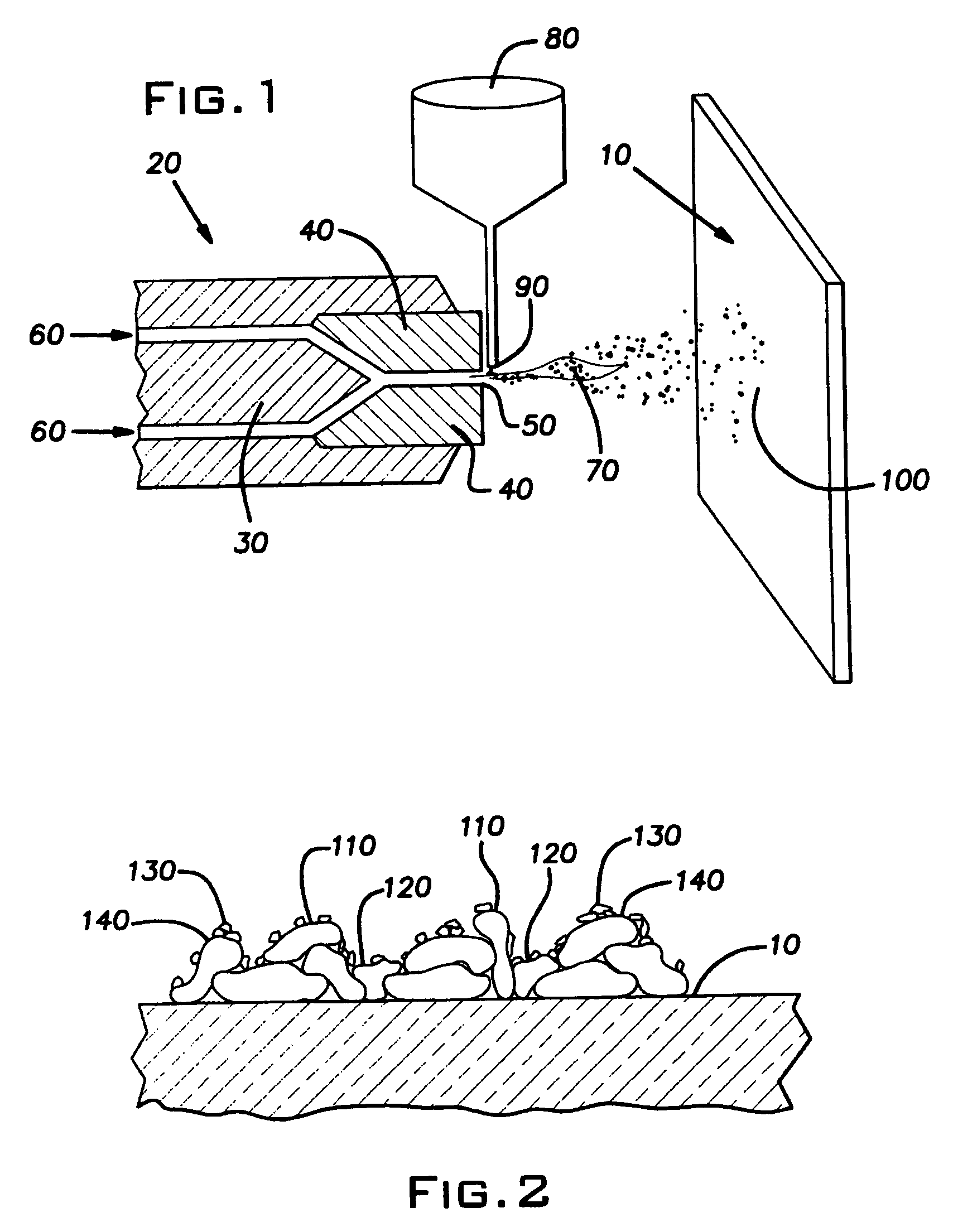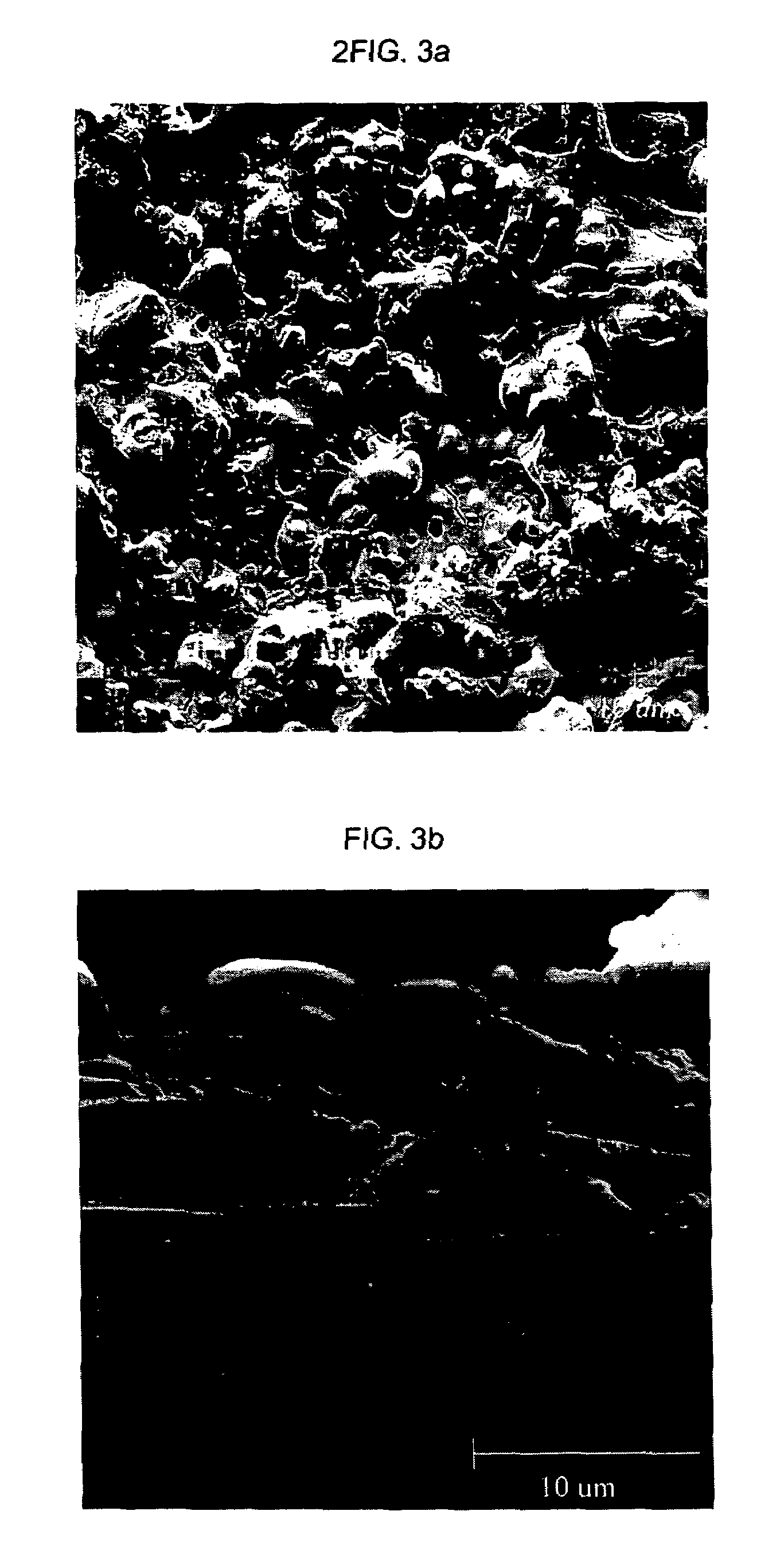Process for structuring self-cleaning glass surfaces
a technology of glass surface and structure, which is applied in the direction of plasma technique, coating, chemical apparatus and processes, etc., can solve the problems of difficult to achieve small bumps or nodules of wax time-consuming and costly cleaning of glass surfaces, and inability to duplicate the lotus effect on the surface of glass
- Summary
- Abstract
- Description
- Claims
- Application Information
AI Technical Summary
Problems solved by technology
Method used
Image
Examples
example 1
[0035]One part by volume of concentrated hydrochloric acid was dissolved in 3600 parts of distilled water. This solution was labeled Acid 1. One part by volume of concentrated hydrochloric acid was dissolved in 200 parts of distilled water. This solution was labeled Acid 2. 980 g of isopropanol was weighed into a plastic jar. 20 g of Aerosil 200, a fumed silica with a surface area of 200 m2 / g available from Degussa, was weighed into the jar on top of the isopropanol. The mixture was shaken together to wet the Aerosil. The suspension was dispersed in a homogenizer available from Microfluidics at a pressure of 18000 psi. This Fumed Silica Suspension was stored in a plastic jar for later use.
example 2
[0036]106.36 g of denatured ethanol was placed in a round bottom flask. 0.7 g of tetraethylorthosilicate (TEOS) was weighed and added drop wise to the stirring ethanol. The beaker was rinsed with 10 g of ethanol. 1.4 g of Acid 1 from Example 1 was weighed. The acid was added drop wise to the stirring solution. 10 g of ethanol was used to rinse the beaker. This ethanol was added to the round bottom flask. While continuing to stir the solution, a condenser was placed on the round bottom flask and heat was applied from a heating mantle. The heat was increased incrementally to achieve a temperature of 60° C. After heating at 60° C. for one hour, the heating mantle was removed from the round bottom flask and the flask was bathed in cool tap water to return the solution to approximately room temperature (20° C.). 1.4 g of Acid 2 from Example 1 was then weighed. This acid solution was added drop wise to the stirring ethanol / TEOS solution. 10 g of ethanol was used to rinse the vessel. This ...
example 3
[0037]150 g of the Fumed Silica Suspension described in Example 1 and 225 g of denatured ethanol were placed in a round bottom flask. 1.5 g of tetra-ethyl orthosilicate (TEOS, available from Degussa), and 1.23 g methyl-triethoxysilane (MTES, available from Gelest) were weighed and added drop wise to the stirring suspension. The beaker was rinsed with a small portion of ethanol. 2.25 g of Acid 1 from Example 1 was weighed. The acid was added drop wise to the stirring solution. A small portion of ethanol was used to rinse the beaker. This ethanol was added to the round bottom flask. While continuing to stir the solution, a condenser was placed on the round bottom flask and heat was applied from a heating mantle. The heat was increased incrementally to achieve a temperature of 60° C. After heating at 60° C. for one hour, the heating mantle was removed from the round bottom flask and the flask was bathed in cool tap water to return the solution to approximately room temperature (20° C.)...
PUM
| Property | Measurement | Unit |
|---|---|---|
| diameter | aaaaa | aaaaa |
| diameter | aaaaa | aaaaa |
| contact angles | aaaaa | aaaaa |
Abstract
Description
Claims
Application Information
 Login to View More
Login to View More - R&D
- Intellectual Property
- Life Sciences
- Materials
- Tech Scout
- Unparalleled Data Quality
- Higher Quality Content
- 60% Fewer Hallucinations
Browse by: Latest US Patents, China's latest patents, Technical Efficacy Thesaurus, Application Domain, Technology Topic, Popular Technical Reports.
© 2025 PatSnap. All rights reserved.Legal|Privacy policy|Modern Slavery Act Transparency Statement|Sitemap|About US| Contact US: help@patsnap.com



